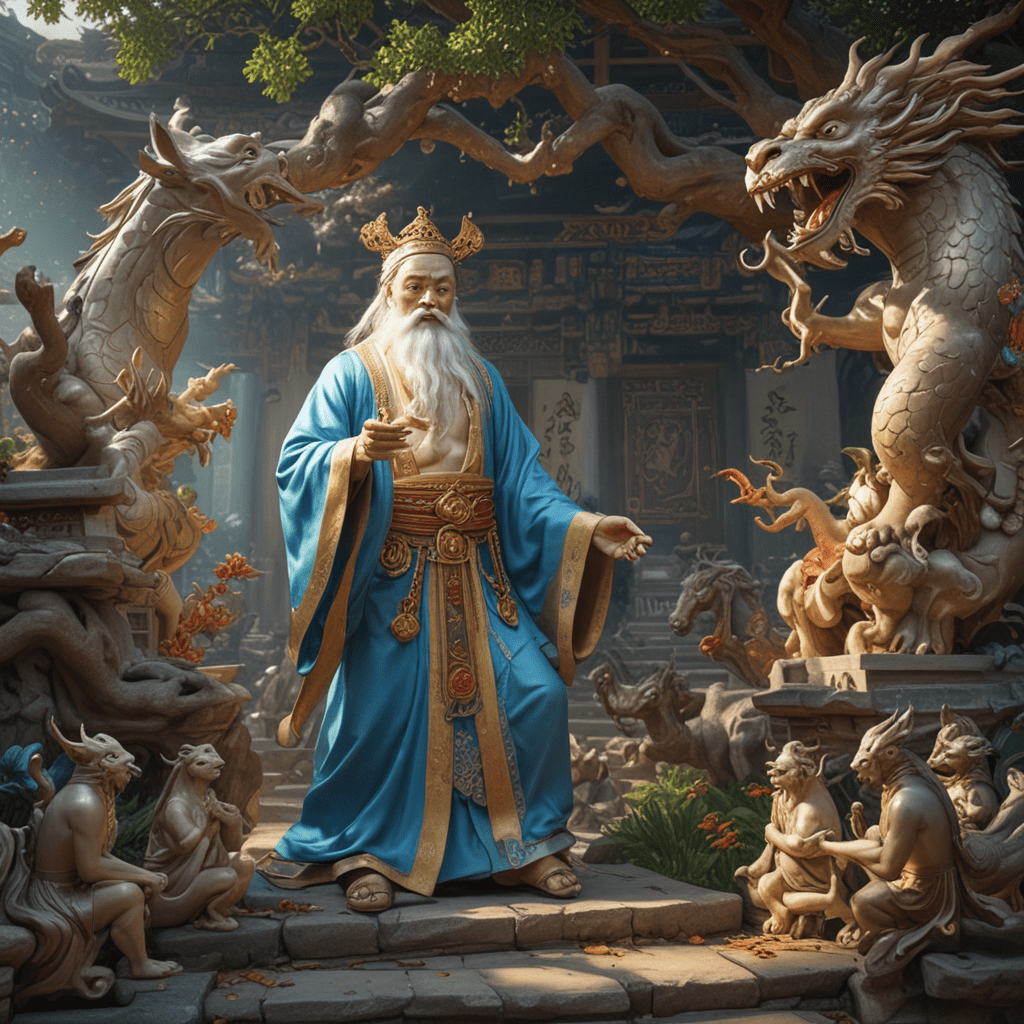From Folklore to Astronomy: The Myths of the Stars
Introduction: The Intersection of Myth and Science
The night sky has always fascinated humanity, serving as a canvas for the imagination and a guide for scientific inquiry. This article explores the intricate relationship between folklore and astronomy, delving into how myths surrounding stars have shaped human culture and our understanding of the cosmos. Myths not only provide insight into the values and beliefs of ancient civilizations but also illustrate the early attempts to comprehend celestial phenomena.
The Origins of Star Myths
Star myths can be traced back to ancient civilizations, where observations of celestial bodies played a crucial role in daily life. Early humans looked to the sky for guidance, and their interpretations of celestial events led to the creation of intricate stories that explained the universe around them.
- Mesopotamia: The Sumerians created one of the earliest star catalogs, linking stars to their gods.
- Egypt: The Egyptians associated constellations with their deities, using them to guide agricultural cycles.
- Greeks: Greek mythology is richly populated with stories of gods and heroes that are reflected in the stars.
Storytelling was essential for passing down knowledge, as it helped to contextualize astronomical observations, making them accessible to people who lacked scientific understanding.
Cultural Variations in Star Myths
Star myths vary significantly across cultures, influenced by geography, environment, and societal values. A few notable examples include:
- Greek Myths: Stories of Orion, the Hunter, and Cassiopeia, the Queen, are well-known in Western culture.
- Native American Myths: Various tribes have unique interpretations, such as the Lakota’s tale of the Seven Sisters, which connects the Pleiades to their cultural identity.
- Chinese Myths: The Chinese see the stars as part of a broader cosmological framework, with the legend of the Cowherd and the Weaver Girl illustrating themes of love and separation.
These cultural narratives reflect not just an understanding of the stars but also the values and beliefs of the societies that created them.
Constellations: From Myth to Sky
Many of the constellations we recognize today have rich mythological backgrounds. For example:
- Orion: Named after a giant huntsman in Greek mythology, Orion is one of the most identifiable constellations.
- The Big Dipper: Part of Ursa Major, this constellation has different names and stories in various cultures, including the Seven Great Ones in Native American lore.
- Draco: The Dragon, often associated with various dragon myths across cultures, symbolizes power and protection.
These myths have transformed into modern astronomical nomenclature, illustrating how ancient stories have influenced contemporary science.
The Role of Astronomy in Mythology
An essential function of mythology was to explain celestial phenomena. Ancient astronomers relied on myths to interpret events such as:
- Solstices: Many cultures celebrated the longest and shortest days of the year with rituals, attributing them to the actions of deities.
- Eclipses: Often seen as omens, eclipses were explained through stories of gods battling or celestial beings being swallowed.
These narratives helped societies make sense of their world, providing a framework for understanding the cosmos.
The Influence of Star Myths on Navigation and Timekeeping
Star myths were not merely stories; they had practical applications in navigation and timekeeping. Sailors across the ages have relied on the stars for guidance, using myths to remember star positions. For instance:
- Polaris: Known as the North Star, it has been a crucial navigation point and is often featured in navigational myths.
- Seasonal Calendars: Many cultures developed calendars based on celestial events, integrating myths about the stars into agricultural practices.
These stories were essential for survival, influencing how societies interacted with their environment.
The Evolution of Star Myths in Modern Culture
Today, star myths continue to evolve, reflecting contemporary values and beliefs. Modern interpretations often blend science fiction with traditional mythology, as seen in popular media:
- Literature: Many authors incorporate celestial myths into their narratives, giving new life to ancient stories.
- Film and Television: Movies and shows frequently draw on mythological themes, reinterpreting them for modern audiences.
This blend highlights the ongoing importance of myth in shaping our understanding of the universe.
Scientific Discoveries vs. Mythological Beliefs
As science has advanced, many star myths have been challenged or disproven. Notable examples include:
- Geocentrism: The belief that Earth was the center of the universe was debunked by Copernicus and Galileo.
- Constellations: While still used for navigation, modern astronomy recognizes that stars in a constellation may be far apart in space.
Despite these advancements, the relationship between myth and science remains complex, with both fields contributing to our understanding of the cosmos.
The Future of Star Myths: Space Exploration and Beyond
As we venture further into space, new discoveries may reshape our understanding of stars and create new myths. Potential developments include:
- Exoplanets: Discovering new worlds could inspire stories about life beyond Earth.
- Astrobiology: The search for extraterrestrial life may lead to new narratives about our place in the universe.
These future myths may reflect our evolving relationship with the cosmos and highlight humanity’s quest for knowledge.
Conclusion: The Enduring Power of Star Myths
Star myths have an enduring power, connecting us to our cultural heritage while fostering scientific inquiry. They remind us of the stories that have shaped our understanding of the universe and the importance of preserving these narratives as we continue to advance scientifically. The interplay between myth and science enriches our exploration of the cosmos, ensuring that both stories and discoveries illuminate our path forward.



